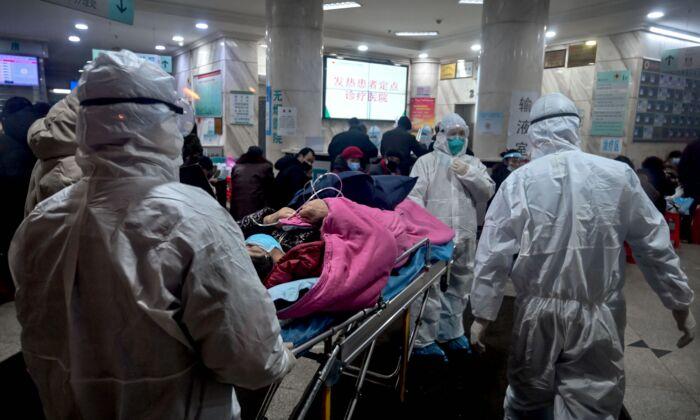As many as 968,800 people in Wuhan, China, had developed antibodies to COVID-19 by April 2020, while the first case appears to have emerged between mid-October and mid-November in 2019, according to two new studies.
The results of both research groups revealed data that differ from the Chinese regime’s disclosures.

Infection Count
Thirty authors from China co-researched the status of the CCP virus infection in Wuhan for the Lancet study.The research is based on data from 9,542 people who live in 100 communities throughout Wuhan, the capital city of Hubei Province and ground zero of the CCP virus outbreak. Blood samples were collected on April 14 and 15, 2020.
The result showed that 6.92 percent of the population had been infected with the CCP virus, with 82.1 percent of the infected ones being asymptomatic carriers. Among the infected group, 39.8 percent of them had neutralizing antibodies in their blood, which meant they were immune to the CCP virus after being infected.
People who lived in Wuhan in April 2020 were survivors of the city’s epidemic, which peaked in January and February 2020. There’s a possibility the people who left the city in January had COVID-19, since the Science magazine study estimates that the first case likely emerged in October 2019.

First Case
Researchers at the University of California–San Diego School of Medicine, with colleagues at the University of Arizona and Illumina Inc., published the Science magazine study about the world’s first possible COVID-19 case, studied through molecular dating tools and epidemiological simulations.The study points out that the CCP virus is a zoonotic coronavirus, meaning it’s transmitted to humans from an unknown animal host. But based on over a dozen studies conducted by the researchers in the past year, it’s unlikely that the Huanan Seafood Market in Wuhan—which the Chinese regime claims was ground zero—is the venue where the animal transmitted the virus to humans.
“We used Bayesian phylodynamics to reconstruct the underlying coalescent processes,” the researchers explained, saying they analyzed 583 CCP virus complete genomes that were sampled in China.
Combining the CCP virus’s genetic diversity study with the earliest reported cases and other study’s results about the spread of the CCP virus in Wuhan before the lockdown on Jan. 23, 2020, the researchers estimate that the first COVID-19 case emerged as early as October 2019.





